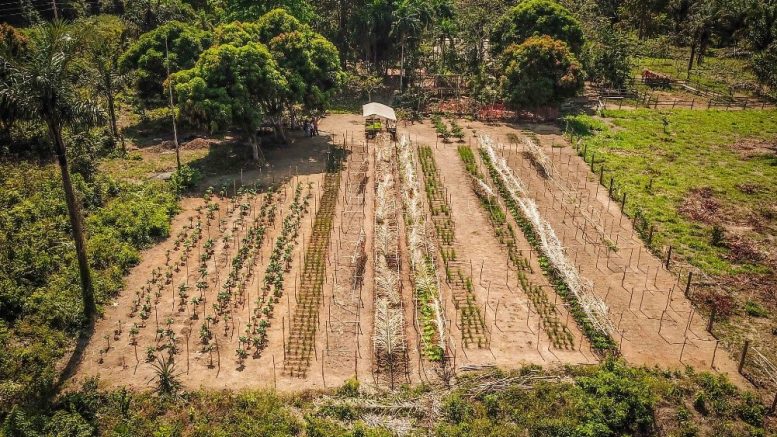“… agroforestry systems can be applied to all Brazilian biomes and to different ways of production …”
Valter Ziantoni is a forestry engineer by the Federal University of Paraná, specialized in management by Fundação Getúlio Vargas and master in agroforestry by Bangor University, United Kingdom.
Paula Costa is also a forestry engineer and specialist in environmental management by University of São Paulo – Luiz de Queiroz College of Agriculture, and Biologist by the State University of São Paulo.
Ziantoni and Costa are founders of the Agroforestry Hub Pretaterra.

Valter Ziantoni and Paula Costa, founders of Pretaterra.
AgriBrasilis – What is regenerative agriculture, agroecology and agroforestry (or SAFs)?
Ziantoni and Costa – Regenerative agriculture includes different agricultural techniques with the aim of rehabilitating and conserving agricultural and food systems through soil regeneration, increasing biodiversity and improving water cycle.
Agroecology is a science that considers ecological principles of the study and treatment of productive and native ecosystems in ways that are culturally sensitive, socially just and economically viable.
Agroforestry results from the integration of trees in the productive landscape, whether agricultural crops or animals, inspired by the dynamics of natural ecosystems. It is a productive system that associates food production with the recovery of degraded areas.
AgriBrasilis – Why choose agroforestry?
Ziantoni and Costa – The main advantages of agroforestry when it comes to conventional agriculture are soil fertility recovery, erosion reduction, water infiltration increase and the conservation of rivers and springs. There is, also, an increase of species diversity, natural control of plagues and diseases and production diversity.
In addition, the trees can be used as a source of income, since wood and fruits can be exploited and sold.
There are different types of agroforestry systems. In Brazil, some of the main systems are combining trees (silviculture) with annual or perennial agricultural crops. There are also silvopasture systems, which unite trees and pastures (animals) and the systems of enrichment of capoeiras with species of economic importance (such as cabruca with cocoa).
Agroforestry systems can be applied in all Brazilian biomes and to different ways of production, from the family agriculture, in a small scale or artisanal, to big farms, more technified and mechanized, on a larger scale.
In order for these systems to become viable, a good planning and balance between agribusiness production and environmental conservation is necessary. The ones involved in the process, reap a product with higher added value.
AgriBrasilis – Is there room for innovation in the context of agroforestry?
Ziantoni and Costa – Yes, there is. An example is the analysis and planning based in a robust database, that allows the rural entrepreneurs to make more assertive decisions. In the agroforestry projects, there are many examples that reinforce the importance of Data Science.
All agroforestry projects use the same logic, since we are inspired by the natural ecosystems. However, there is no definitive recipe, and the analysis of data is fundamental for elaboration of the correct and most adequate design for each productive system.
AgriBrasilis – What is Pretaterra and how does it work?
Ziantoni and Costa – Pretaterra is an initiative that dedicates itself into disseminating agroforestry regenerative systems, developing designs that are replicable and elastic, combining scientific data, empirical information and traditional knowledge with technological innovation, building a new productive paradigm.
At the forefront of Agroforestry, Pretaterra designed, implemented and economically modeled the agroforestry design that won, in 2019, the first place in Sustainability of the award “Novo Agro”, from Santander bank and of ESALQ, with the case “Café dos Contos”, em Monte Sião (MG).
In 2018, we won the first place in innovational business in the startups contest in Hackatown, and in 2020 we were finalists of the award “Latin America Green Award.” In 2021 Pretaterra takes the lead in the largest regenerative initiative in the world on its Agroforestry front, the Circular Bioeconomy Alliance.
This is the work that has been developed by Pretaterra, an initiative that dedicates itself to build a new paradigm that is not only based in monoculture.


